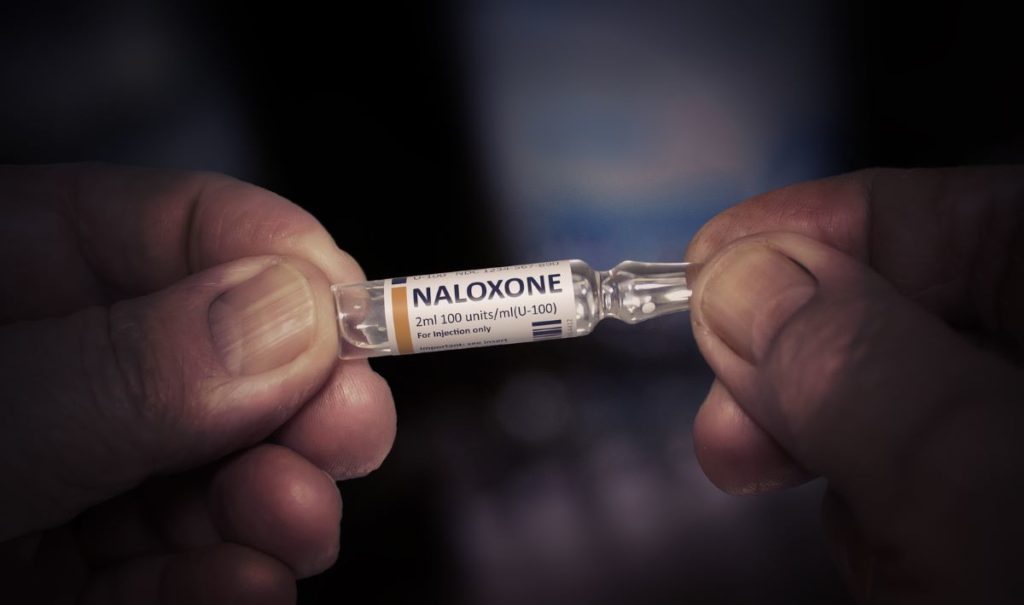Over the past few years, the opioid epidemic has surged throughout the United States. And unfortunately, it may have hit too close to home in the form of your loved one’s opioid addiction. Just like many other cases across the country, your loved one’s substance abuse probably started as a legal prescription to cope with pain from an injury, surgery or trauma.
The question now is, what do you do? Is there anything you can do to help? While you can’t cure their addiction, there is a way for you to help them. Naloxone, a drug used by emergency responders to treat opioid overdoses, is now available to the public.
No one wants to think of their loved one suffering an opioid overdose. But being prepared could be the difference between giving your loved one a chance at recovery and something much worse.
What is Naloxone?
Let’s start with the basics. Naloxone is an opioid antagonist that can negate the effects opioids have on the brain. When opioids are abused, neurotransmitters like dopamine overwhelm the brain to help the user feel relaxed and at ease.
The problem is opioids also impact the part of the brain that controls breathing. If too much of an opioid is consumed, it can cause the user to overdose and stop breathing all together.
Naloxone is used to reverse these potentially fatal effects and keep the user alive until they’re able to get further medical treatment at a hospital. Recent advancements have made Naloxone available in the form of a nasal spray, making it easy for anyone to administer the drug.
It’s also worth noting that Naloxone is not a controlled substance. And it won’t cause any harm if it’s given to someone who doesn’t have opioids in their system.
How Naloxone Works
How does Naloxone actually reverse the effects of an opioid overdose? To answer this question, you first need to understand how opioids trigger an overdose in the first place. There are two key players in this process: the brain’s opioid receptors and the opioid’s molecules. Like two puzzle pieces, the receptors and molecules fit together perfectly.
Luckily, Naloxone is also able to attach to the brain’s opioid receptors, making it the ideal solution to break up this deadly connection. When Naloxone is administered, it separates the opioid’s molecules from the brain’s receptors and replaces the molecules for a short time, negating the opioid’s effects.
Where Can You Buy Naloxone?
Although Naloxone (or specifically Narcan) is a prescription medication, you can still buy it without a prescription. Under the Statewide Naloxone Standing Order or Collaborative Practice Agreement, residents in every state can buy Naloxone from their pharmacist. It’s important to note that the type of Naloxone available is only the nasal spray version.
How Do You Use Naloxone?
It isn’t always easy to tell when someone has overdosed on opioids. You can ask them directly, but that’s not always possible. An opioid overdose often causes people to go unconscious. Some warning signs to look out for include:
- Limp body
- Pale or blue skin, lips or nails
- Slowed breathing or no breathing
- Slow heart rate
- Vomiting
If you suspect an opioid overdose, it’s time to take action. Remove the Naloxone from the package. Place one finger on each side of the nozzle and place the tip of the nozzle into a nostril until your fingers touch their nose. Then press the plunger down firmly.
Once administered, call 911 if you haven’t already. Explain that you have given your loved one Naloxone and follow any further instructions the first responder on the phone gives you. While effective, Naloxone is not a substitute for emergency care.
What Happens After Naloxone is Administered?
Naloxone lasts for an average of 45 minutes. While it’s possible to revive someone with Naloxone, it’s possible for opioids to reattach to the brain’s receptors as Naloxone wears off. That’s why it’s imperative your loved one receive professional medical treatment after an overdose.
Reviving someone from an opioid overdose is a stressful experience. If you suspect a loved one of having an opioid use disorder, try to talk to them about addiction treatment and warn them about the risks of overdosing.
One conversation could be the difference between your loved one starting a journey to recovery and you having to save their life with Naloxone.
Discover an Effective, Family-Run Opioid Rehab Center in Florida
Footprint Beachside Recovery can help your loved one break free from their opioid use disorder. Our own personal experience with opioid addiction and loss puts us in a unique position to give your loved one the personal care they deserve.
We know that the residents of Florida face higher rates of opioid use disorders and overdose than the national average. That’s why our opioid rehab center takes a holistic approach to recovery. No matter what program your loved one enrolls in, our goal is to give them the tools for lasting recovery.
Located on the beautiful shores of Treasure Island, your loved one will have a comfortable environment to heal from opioid addiction. Every recovery journey begins with a first step. Contact our team today to learn more and share your story. Change is possible and it can be found at Footprints Beachside Recovery.


